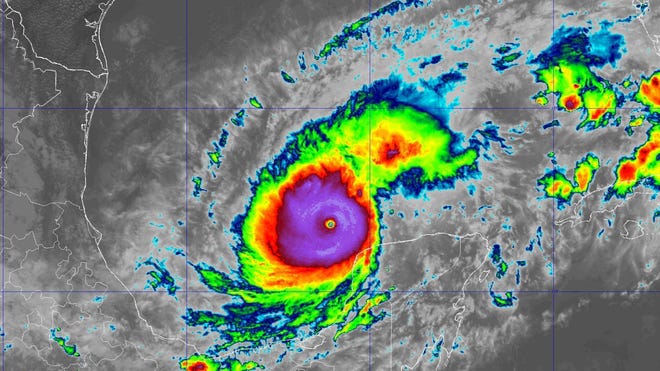Observer Time: October 08, 2024
The Pacific hurricane season begins June 1 and runs through November 30; on average, the Atlantic Ocean sees seven hurricanes and three major hurricanes yearly.
On the Saffir-Simpson Hurricane Wind Scale, a major hurricane is classified as a category 3 or higher. This scale consists of five categories related to the hurricane’s wind speed.
It also rates property damage, from “some damage” to “severe damage”.
The highest is a Category 5, a hurricane with sustained winds of 157 mph or greater.
According to the National Hurricane Center, since 1924, there have been 42 Category 5 hurricanes in the Atlantic Ocean — the most recent being Hurricane Milton, which hit the Florida coast with winds of 180 mph.
The total may be higher since satellite tracking technology was not available until the 1960s, and storms that may have been Category 5 hurricanes may have gone unnoticed.
Many Category 5 hurricanes have reached this strength several times in their lifetime. Hurricanes Allen in 1980, Isabel in 2003, and Ivan in 2004 reached Category 5 strength three times during their travels.
According to the National Oceanic and Atmospheric Administration database, Hurricane Cuba in November 1932 and Hurricane Irma in 2007 spent the longest time at category 5 intensity, 78 and 77 hours, respectively.
Despite the number of hurricanes that have made landfall in the United States that have reached category 5, only four hurricanes on record have reached this strength.
So today here at Observer Time we will discuss and observe the news of 5 categories of hurricanes.

HURRICANES CATEGORIES
The Labor Day Hurricane of 1935
The Great Labor Day Hurricane hit Florida in early September 1935, which the National Hurricane Center called the worst hurricane ever to hit the United States killing 408 people – most of them.
World War I soldiers served in the Florida Keys, where the hurricane made landfall.
According to NOAA, the storm cost $6 million ($137 million in 2024).
1969 Hurricane Camille
The most powerful storm of the 1969 Atlantic hurricane season, Camille made landfall in Mississippi shortly before midnight on August 17.
The storm created storm surges as high as 24 feet and flattened nearly everything along the Mississippi coast.
Estimated $1.42 billion in damage (over $12 billion in 2024) and over 259 deaths.
Hurricane Andrew 1992
On August 22, 1992, Hurricane Andrew hit South Florida as a Category 5 hurricane with sustained winds of 165 mph and a gust of 174 mph.
Thirty billion dollars in damage and over 40 deaths. It was the costliest disaster in American history at the time.
At the end of the 1992 hurricane season, Andrew’s name was removed from the Atlantic hurricane list.
2018 Hurricane Michael
Hurricane Michael made landfall on the coast of Mexico, Florida on October 10 with sustained winds of 160 mph – making it the strongest hurricane to ever hit the Florida coast.
It was the first Category 5 hurricane to make landfall in the continental United States since Andrew 26 years ago.
The storm was originally measured as a Category 4 hurricane, but forecasters downgraded it in April 2019 after conducting post-storm analyses.
More than 74 deaths have been attributed to the storm – including 59 in the United States and 15 in Central America. Michael caused about $25.1 billion in damages.
Historic Category 5 storms
Here are the names of the estimated 42 tropical cyclones that have reached Category 5 intensity since 1924:
- “Cuba” – 1924
- “San Felipe II Okeechobee” – 1928
- “Bahamas” – 1932
- “Cuba” – 1932
- “Cuba-Brownsville” – 1933
- “Tampico” – 1933
- “Labor Day” – 1935
- “New England” – 1938
- “Great Atlantic” – 1944
- Carol – 1953
- Janet – 1955
- Esther – 1961
- Hattie – 1961
- Inez – 1966
- Beulah – 1967

For regular updates subscribe to the newsletter of Observer Time






















